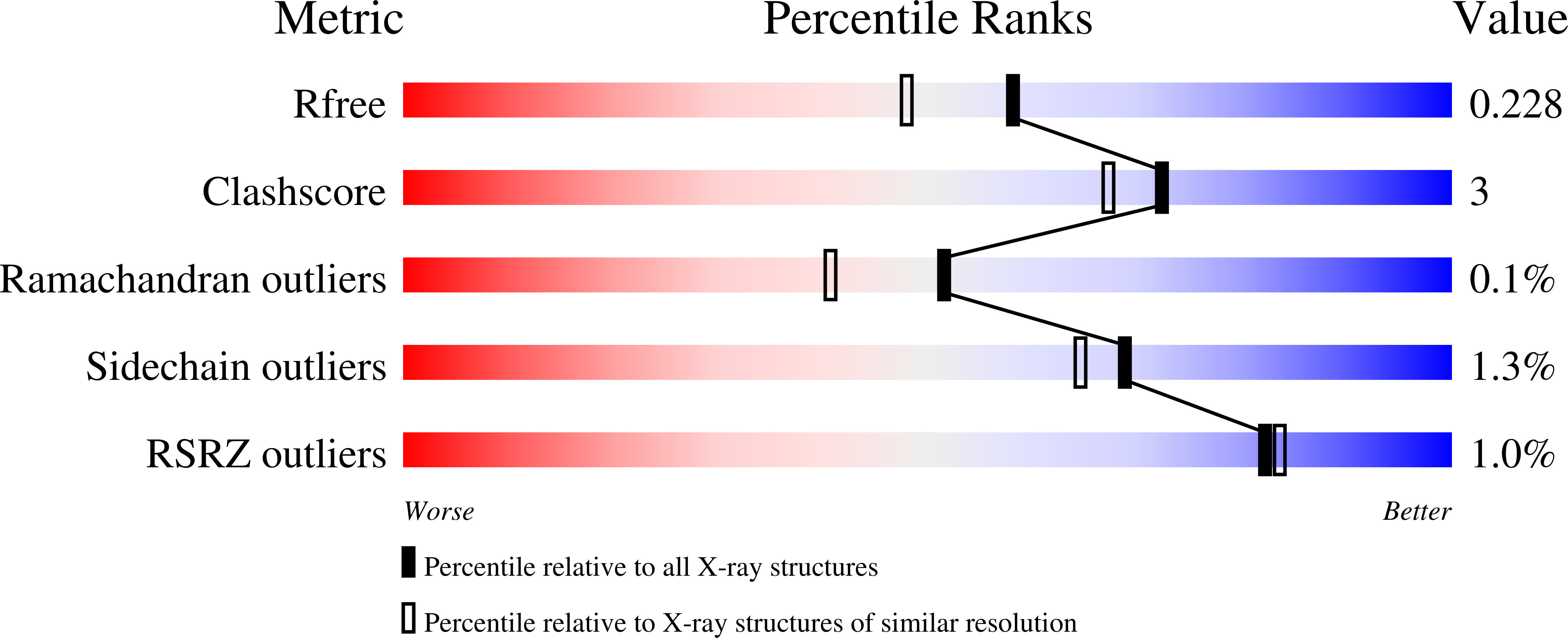Investigation of flexibility of neuraminidase 150-loop using tamiflu derivatives in influenza A viruses H1N1 and H5N1.
Zima, V., Albinana, C.B., Rojikova, K., Pokorna, J., Pachl, P., Rezacova, P., Hudlicky, J., Navratil, V., Majer, P., Konvalinka, J., Kozisek, M., Machara, A.(2019) Bioorg Med Chem 27: 2935-2947
- PubMed: 31128993
- DOI: https://doi.org/10.1016/j.bmc.2019.05.024
- Primary Citation of Related Structures:
6HP0 - PubMed Abstract:
This study focuses on design, synthesis and in vitro evaluation of inhibitory potency of two series of sialylmimetic that target an exosite ("150-cavity") adjacent to the active site of influenza neuraminidases from A/California/07/2009 (H1N1) pandemic strain and A/chicken/Nakorn-Patom/Thailand/CU-K2-2004 (H5N1). The structure-activity analysis as well as 3-D structure of the complex of parental compound with the pandemic neuraminidase p09N1 revealed high flexibility of the 150-cavity towards various modification of the neuraminidase inhibitors. Furthermore, our comparison of two methods for inhibition constant determination performed at slightly different pH values suggest that the experimental conditions of the measurement could dramatically influence the outcome of the analysis in the compound-dependent manner. Therefore, previously reported K i values determined at non-physiological pH should be carefully scrutinized.
Organizational Affiliation:
Department of Organic Chemistry, Faculty of Science, Charles University, Hlavova 8, 128 00 Prague 2, Czech Republic; Institute of Organic Chemistry and Biochemistry of the Czech Academy of Sciences, Gilead Sciences and IOCB Research Center, Flemingovo n. 2, 166 10 Prague 6, Czech Republic.






















